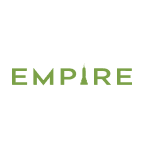
FMP

Empire State Realty Trust, Inc.
ESRT
NYSE
Empire State Realty Trust, Inc. (NYSE: ESRT), a leading real estate investment trust (REIT), owns, manages, operates, acquires and repositions office and retail properties in Manhattan and the greater New York metropolitan area, including the Empire State Building, the World's Most Famous Building. Headquartered in New York, New York, the Company's office and retail portfolio covers 10.1 million rentable square feet, as of September 30, 2020, consisting of 9.4 million rentable square feet in 14 office properties, including nine in Manhattan, three in Fairfield County, Connecticut, and two in Westchester County, New York; and approximately 700,000 rentable square feet in the retail portfolio. Long the leader in energy efficiency retrofits and Indoor Environmental Quality, Empire State Realty Trust is the first commercial real estate portfolio in the U.S. to achieve the WELL Health-Safety Rating.
10.15 USD
0.09 (0.887%)
DuPont Analysis
The DuPont analysis, pioneered by the DuPont Corporation, offers a structured approach to assessing fundamental performance. It involves breaking down the return on equity (ROE) into various components, aiding investors in comprehending the factors influencing a company's returns.
ROE = Net Income / Average Total Equity
ROE = (Net Income / Sales) * (Revenue / Average Total Assets) * (Average Total Assets / Average Total Equity)
The company's tax burden is (Net income ÷ Pretax profit). This is the proportion of the company's profits retained after paying income taxes. [NI/EBT] The company's interest burden is (Pretax income ÷ EBIT). This will be 1.00 for a firm with no debt or financial leverage. [EBT/EBIT] The company's operating income margin or return on sales (ROS) is (EBIT ÷ Revenue). This is the operating income per dollar of sales. [EBIT/Revenue] The company's asset turnover (ATO) is (Revenue ÷ Average Total Assets). The company's equity multiplier is (Average Total Assets ÷ Average Total Equity). This is a measure of financial leverage. Profitability (measured by profit margin) Asset efficiency (measured by asset turnover) Financial leverage (measured by equity multiplier)